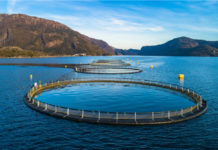Social responsibility is at the root of everything Regal Springs does—from producing the highest quality Tilapia to treating all employees with the utmost care. Some of the communities that Regal Springs has revitalized through Tilapia farming include:
Sumatra, Indonesia
Regal Springs has invested thousands of dollars into infrastructure maintenance in the community of Sumatra to keep roads and bridges safer for travel. Additionally, they’ve planted more than 7,000 trees in the area to fight deforestation since April 2008. Energy is also preserved through the use of processing plants that transform the fish frame, guts, skin and scales into fish oil, which uses residual heating and cooling to process—meaning no extra energy is expended. This oil can be used as Bio Diesel for equipment at the farms adding to the environmentally friendly nature of this operation.
Cajon and Yojoa, Honduras
Regal Springs operates a plant called Aquafinica near the lake communities of Cajon and Yojoa in Honduras. The water there is monitored extensively to ensure cleanliness and the plant ships Tilapia to the U.S. via boat to reduce emissions. In fact, sea freight produces 75% less greenhouse gas emissions than air freight and saves 215 metric tons of CO2 each month.
The land is Cajon and Yojoa are also important to Regal Springs, as 22,500 hectares of land are protected around Lake Cajon from the devastating effects of deforestation. The employees are also offered an adult education program, which has been in place since 2005 and has helped over 1,200 of their workers receive their high school diplomas.
Plan de Ayala, Mexico
In Mexico, Regal Springs wants to ensure that the local communities thrive. How? They are helping to individually finance local fisherman with farming cages to put back into the local
community. Additionally, Regal Springs has helped to fund local schools and petitioned for increased teacher’s wages, bettering the community as a whole.
The work doesn’t just stop there. Regal Springs is constantly looking for new and innovative ways to improve the communities that they and their employees live and operate in.
Photo credit: Jose Murillo






